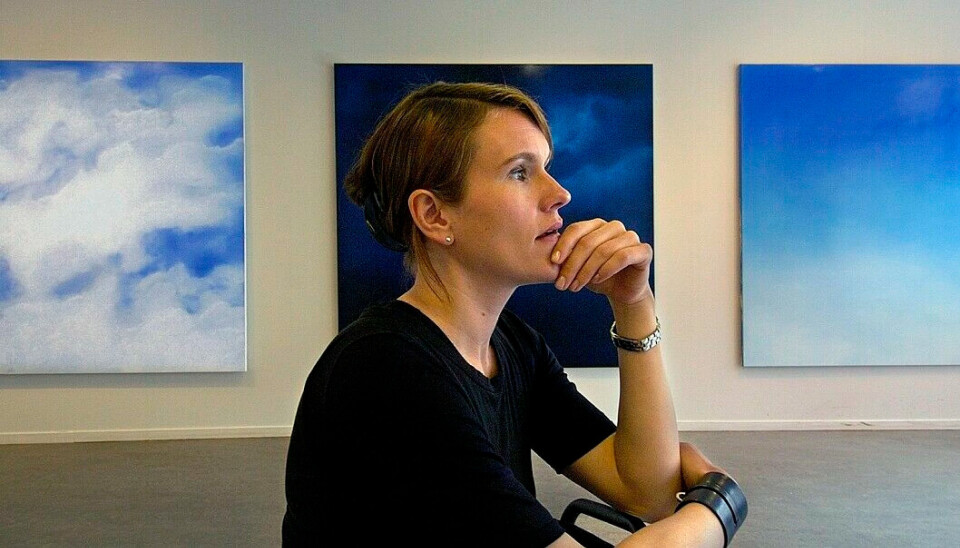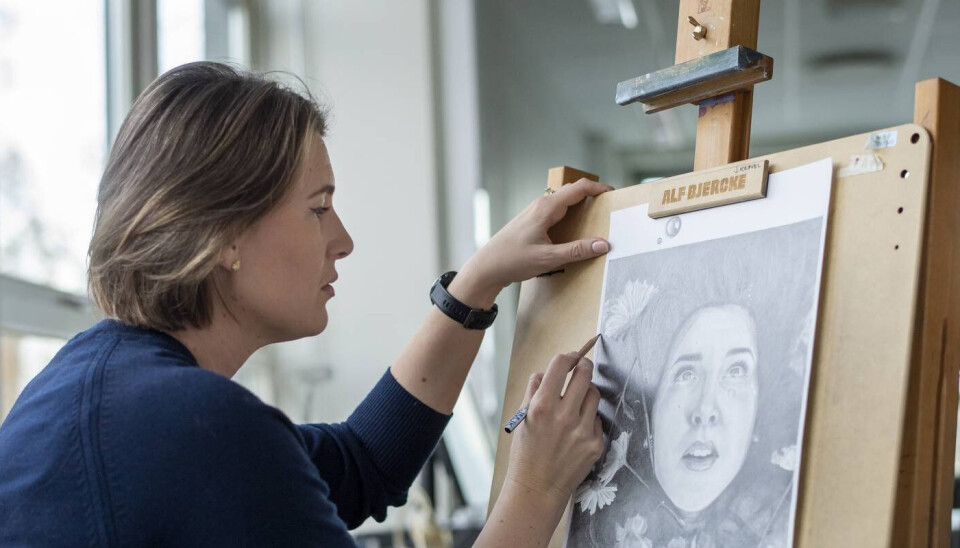THIS ARTICLE/PRESS RELEASE IS PAID FOR AND PRESENTED BY Oslo Metropolitan University - read more

Fear of failure hinders creativity
Too high expectations and fear of failure can block the creative process.
“By making mistakes, we test different approaches and can be more certain of achieving the best possible result,” Ingeborg Stana says.
Stana is a professor of visual arts at OsloMet and has written a number of scholarly articles about creativity. She is also a visual artist and teaches drawing to students.
“When it comes to creative work, there is no book of answers. You must find the answers yourself,” she says.
Stana is particularly concerned about young people’s creativity in today’s world. Research suggests that the coming generation is less willing to take risks than previous generations.
“It may be a real hindrance for them,” says Stana, who believes that modern working environments and educational institutions underestimate the importance of cultivating mistakes.

A rough draft is far from perfect
What is crucial is how one thinks during the different phases of creative work, the professor explains.
“Put simply, it is important not to be too critical in the early phase, and to be highly capricious. Critics are not welcome in the early phases,” Stana says.
That is why it is called the "Shitty First Draft". This means sitting down to write or sketch the first version of a text or image, and knowing full well that the first draft will be bad.
This attitude has helped many feel comfortable with the idea that the rough draft is far from perfect.
“It is in the later phases that critical and analytical senses are essential. That is when you start looking for gold among the sand and pebbles,” she continues.
This applies regardless of genre, whether working with music, drawing, photography or text.
All about forgetting oneself
Stana's goal when teaching is to prepare her art students to be brave enough to dare let even bad ideas loose in the middle of chaotic work processes.
The fear of making a mistake is quite simply an obstacle and hinders creative work.
“Does that make it more difficult for a perfectionist to be creative?”
“Many great artists and scientists are perfectionists, so it is not necessarily more difficult for a perfectionist to be creative, but it is important to know when you should be critical and when you should not,” she says.
Stana believes it is mainly about forgetting oneself. She cites football as an example.
“My son is a footballer, and we talk a lot about how to be creative on the pitch. It is often about his spontaneous ability to read the game and spot the best opportunities at a glance,” she says. “Where does he place his focus? Well, he focuses his attention on the ball and the position of his teammates on the pitch. He forgets himself.”

Being in a flow state
Stana points out that creative people are not some special elite or people with original personalities.
“Creativity is a potential most of us have, and it is something we can learn,” she says. “Discipline and perseverance are also important qualities when working creatively, because it is not always the case that good ideas come immediately. You need to be open, experimental and dare to take risks along the way.”
We know from research that it is fear of failure and having overly high expectations that stand in the way of entering the flow state and creative development.
By flow state we mean a state in which a person is completely absorbed in an activity and forgets time and place. You experience a kind of timelessness, because you're completely present in the moment.
It was the social psychologist Mihaly Csikszentmihalyi who developed the flow state theory and first described the phenomenon.
He researched creativity and worked with artists, athletes and scientists, identifying and naming the psychological state that he called flow state in 1975.
Csikszentmihalyi was interested in the state in which one forgets oneself and he also believed people are much happier when they enter a state of ‘flow’.
Stana explains that this may be linked to having less concern with what is right and what is wrong.
Early criticism is like poison
So, what happens if you do not dare to experiment and want everything to be perfect immediately?
“Early perfectionism is like poison to creativity,” Stana argues.
She believes it is crucial to realise that if you do not have overly high expectations at an early stage of the process, the result will be better.
Stana tells of interesting fieldwork carried out by researcher Xiaodong Lin-Siegler at Columbia University's Teachers College.
Her study titled Even Einstein Struggled shows that science students' grades improved after learning about the work processes of famous scientists such as Albert Einstein and Marie Curie.
They learned, for example, that the paths to important scientific discoveries were based on a lot of trial and error, and that the scientists experienced a great number of failures in their research.
Contrary to that, another group of students learned only about the scientists’ known achievements and not how they arrived at their results. The second group of students received worse grades than the first.
Must learn how to handle missteps
In order to succeed, we must dare to fail. Many times.
“Unfortunately, we are not very good at encouraging and facilitating trial and error, either as individuals, in a teaching context or in the workplace,” the professor says. “It is a shame because in order to succeed, we need to learn how to handle missteps and blunders. Many of us work in environments where making mistakes is not valued and might even be punished. Naturally, that makes experimentation a much less attractive option.”
She goes on to talk about the thesis of her colleague Professor Eva Lutnæs at OsloMet, which shows that when grades are set in the subject of arts and crafts, emphasis is most often placed on the end result, and not the creative and experimental process.
“This explains why students do not dare experiment too much – they do not get any credit for it in their grades,” she says.
Ingeborg Stana believes that there is not enough training to deal with missteps and that there is an astonishingly small amount of knowledge about the creative process.
“We have unused potential in this respect and the new generation needs to benefit from taking a few more risks,” she concludes.
References:
Gardner, H. and Davis, K. The App Generation: How Today's Youth Navigate Identity, Intimacy and Imagination in a Digital World, New Haven: Yale University Press, 2013. DOI: 10.12987/9780300199185
Ullén et al. Proneness for psychological flow in everyday life: Associations with personality and intelligence, Personality and Individual Differences, 2012. DOI: 10.1016/j.paid.2011.10.003
Csikszentmihalyi, M. 'Beyond Boredom and Anxiety: Experiencing Flow in Work and Play', San Francisco: Jossey-Bass, 1975. ISBN: 978-0-787-95140-5 (Summary)

This article/press release is paid for and presented by OsloMet
This content is created by Oslo Metropolitan University's communication staff, who use this platform to communicate science and share results from research with the public. Oslo Metropolitan University is one of more than 80 owners of ScienceNorway.no. Read more here.
See more content from OsloMet:
-
"We need to talk about how we assess teacher students"
-
Cannabis use in Norway has increased: “Not everyone needs moral lectures or worried looks"
-
Many children with ADHD do not thrive at school
-
An out-of-control race: Why we fear artificial intelligence
-
One in four seniors feels digitally discriminated against
-
Norwegians are among the least lonely in Europe





































